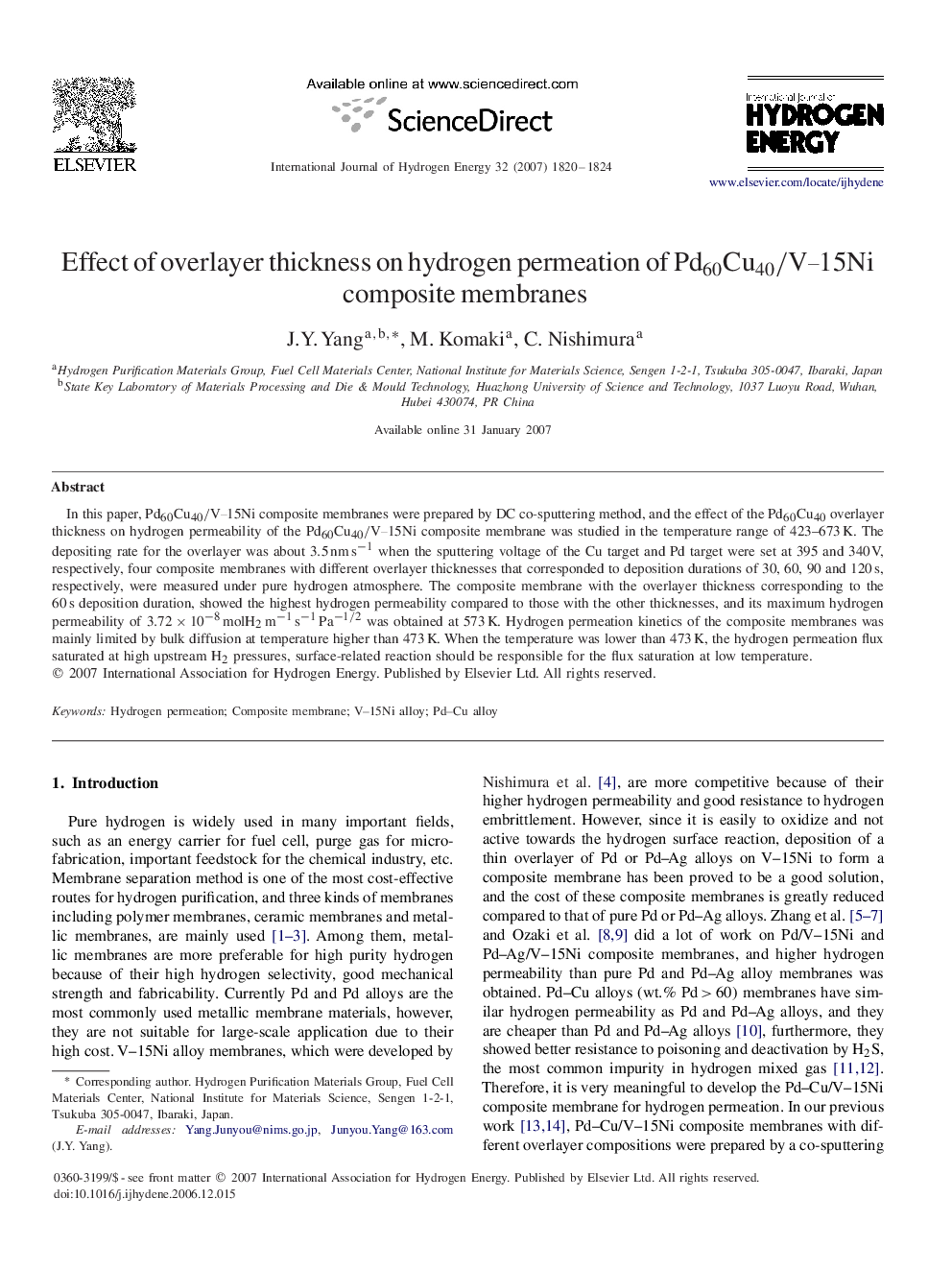| Article ID | Journal | Published Year | Pages | File Type |
|---|---|---|---|---|
| 1274979 | International Journal of Hydrogen Energy | 2007 | 5 Pages |
In this paper, Pd60Cu40/V–15NiPd60Cu40/V–15Ni composite membranes were prepared by DC co-sputtering method, and the effect of the Pd60Cu40Pd60Cu40 overlayer thickness on hydrogen permeability of the Pd60Cu40/V–15NiPd60Cu40/V–15Ni composite membrane was studied in the temperature range of 423–673 K. The depositing rate for the overlayer was about 3.5nms-1 when the sputtering voltage of the Cu target and Pd target were set at 395 and 340 V, respectively, four composite membranes with different overlayer thicknesses that corresponded to deposition durations of 30, 60, 90 and 120 s, respectively, were measured under pure hydrogen atmosphere. The composite membrane with the overlayer thickness corresponding to the 60 s deposition duration, showed the highest hydrogen permeability compared to those with the other thicknesses, and its maximum hydrogen permeability of 3.72×10-8molH2m-1s-1Pa-1/2 was obtained at 573 K. Hydrogen permeation kinetics of the composite membranes was mainly limited by bulk diffusion at temperature higher than 473 K. When the temperature was lower than 473 K, the hydrogen permeation flux saturated at high upstream H2H2 pressures, surface-related reaction should be responsible for the flux saturation at low temperature.
